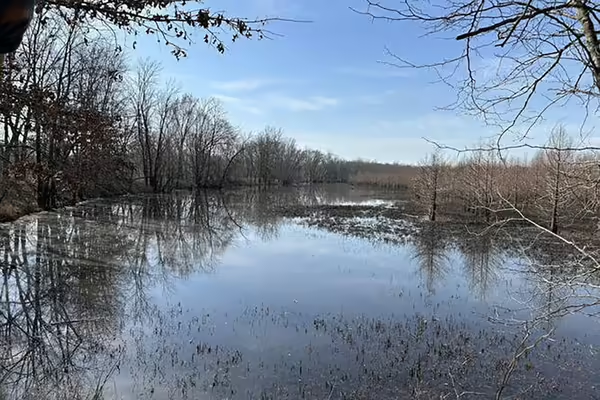
Wetlands are an important part of the ecological system, providing a myriad of benefits for people, wildlife, and the environment. They also serve as “nature’s kidneys,” filtering out pollutants from surface water. A new study from the University of Illinois Urbana-Champaign finds that wetlands along the Mississippi River Basin effectively clean up nitrogen runoff from agricultural fields. The researchers also show this can lead to significant savings for local drinking water treatment facilities.
Non-point source pollution from agricultural production is a major problem for water quality in the U.S. Nutrient runoff can lead to algal blooms, hypoxic zones, and contaminated drinking water.
“Many of our solutions to reduce excess nutrients focus on the stage before the nutrients reach the surface water system. However, wetlands can intervene after the nutrients have already entered the system and help with cleanup and removal,” said study co-author Marin Skidmore, assistant professor in the Department of Agricultural and Consumer Economics, part of the College of Agricultural, Consumer and Environmental Sciences at U. of I.
“Wetlands facilitate the nitrogen cycle and can help nitrogen undergo denitrification, releasing it as N2, a harmless gas that is abundant in Earth’s atmosphere,” she explained.
The study focuses on the Agricultural Conservation Easement Program, formerly the Wetland Reserve Program, which is among the USDA’s smaller conservation initiatives. In these programs, landowners enter a long-term contract to retire a portion of their land from farming. The farmer receives a per-acre payment, and USDA Natural Resources Conservation Service staff converts the area to a wetland.
Read the full article from College of ACES.
University of Illinois Extension develops educational programs, extends knowledge, and builds partnerships to support people, communities, and their environments as part of the state's land-grant institution. Extension serves as the leading public outreach effort for University of Illinois Urbana-Champaign and the College of Agricultural, Consumer and Environmental Sciences in all 102 Illinois counties through a network of 27 multi-county units and over 700 staff statewide. Extension’s mission is responsive to eight strategic priorities — community, economy, environment, food and agriculture, health, partnerships, technology and discovery, and workforce excellence — that are served through six program areas — 4-H youth development, agriculture and agribusiness, community and economic development, family and consumer science, integrated health disparities, and natural resources, environment, and energy.